
ISSN: 3005-8198 (online) / 3005-818X (print)
Volume 1, Issue 1, pp: 10-17
Zeinab Awad1*
1* Belarusian National Technical University (BNTU). Republic of Belarus, Minsk.
E-mail: za_zeinab@hotmail.com1*
* Correspondence Author
Received: 15 May 2023 | Revised: 30 June 2023 | Accepted: 15 July 2023 | Published: 23 July 2023
The intervention of historic buildings is a complex and evolving phenomenon; all aspects of sustainability must be considered. The possibility of these restored buildings collapsing can cause significant damage to the economy, social life, environment, and cultural heritage due to inappropriate interventions and decisions. Therefore, an integrated approach to managing these historic buildings is needed to achieve a sustainable level of restoration. The responsibility to transmit cultural heritage to future generations makes sustainable construction even more important. In this article, common types of interventions are analyzed to create a guide for an integrated approach to sustainability and structural behavior according to international standards and methods. As a case study, the city of Tyre (Sour) was analyzed, and several cases have been studied to highlight the necessary aspects for sustaining historic buildings. By considering all structurally or pathologically important aspects explained below in two sections—macro and micro approaches—this article presents the main sustainability methods and techniques.
Keywords: Historic buildings, sustainable methods and techniques, concrete and waste plastic, restoration.
The tendency to neglect historic buildings is a concerning issue that often leads to their abandonment, dilapidation, and eventual destruction unless preservation efforts are proposed. These buildings hold significant cultural heritage value and form the basis of our culture, necessitating their conservation, structural restoration, rehabilitation, or at times, renovation of civil architecture. To ensure proper and internationally accepted methodologies for these processes, the Venice Charter was established in 1964, defining restoration standards and principles for monuments. The International Council on Monuments and Sites (ICOMOS) has continuously published charters, doctrines, and recommendations for the restoration and conservation of historic monuments. One of these publications, “Recommendations for the Analysis, Conservation, and Structural Restoration of Architectural Heritage” (ICOMOS Charter, 2003), outlines the necessary steps for restoring any historic building.
These guidelines provide fundamental principles for conservation and discuss the rules and methodologies that engineers or architects should follow during restoration. They offer indispensable steps for preserving architectural heritage structures during rehabilitation. However, it is essential to acknowledge that while these charters offer general approaches and evaluation recommendations, specific problems observed in individual structures may vary, making selected interventions during rehabilitation not universally applicable.
In this article, various methods and techniques to address problems faced by historic buildings will be thoroughly examined through case studies in the city of Tyre (Soûr), located in southern Lebanon. The article aims to provide a comprehensive analysis of the types of issues encountered and suggest appropriate recommendations.
Additionally, the article explores the use of concrete as a sustainable material in restoration techniques. Concrete is a popular choice due to its known benefits of strength, durability, and availability. However, it may have some flaws arising from the use of brittle natural resources. To overcome some of these flaws, some experts suggest substituting these resources with recycled waste plastic fibers, which can potentially enhance concrete’s durability and behavior (Khatib, Jahami, et al., 2020). Several studies examining the effects of adding different types of waste plastic fibers to concrete will be briefly listed, along with their results. These fiber types include steel fibers, carbon fibers, recycled polyethylene terephthalate (PET) fibers, and macro polypropylene (PP) fibers. By exploring ways to improve the structural performance of concrete, the article aims to contribute to sustainable restoration practices for historic buildings.
2. BASIC EXPRESSIONS: RESTORATION, RENOVATION, AND PRESERVATION
In the literature, several expressions are used for interventions at the level of countering the neglect of historic buildings, such as adaptive reuse, restoration, renovation, preservation, reconstruction, conservation, and rehabilitation (E. Gracia, et al., 2023). In the following section, some of the main terms will be mentioned, focusing on the case study of Tyre city.
Restoration: The restoration of historic buildings is a complex process that requires a thorough understanding of the building’s history, original structure, and materials used (John, 1903). This process involves repairing damaged walls and roofs, reinforcing foundations, and preserving the original structure. One of the critical aspects of restoring historic buildings is the use of natural and sustainable materials. Rehabilitation and restoration of heritage buildings are ways of sustainable development and an expression of culture (Gopinath & Ramadoss, 2021).
Renovation: Renovation of historic buildings involves updating the building to meet modern standards while preserving its historical integrity and our cultural heritage. This can involve updating the building’s infrastructure, adding modern amenities, and improving accessibility. It is important to strike a balance between modernization and preservation to ensure that the building remains authentic (Chiara & Arian, 2018).
Preservation: Preserving the original structure of a historic building is fundamental to maintaining its cultural significance. The original structure includes the building’s foundation, walls, roof, and decorative elements (Brebbia, 2002). These elements reflect the unique character and cultural significance of the buildings.
3. BUILDING MATERIALS AND SUSTAINABLE RESTORATION TECHNIQUES
Interventions at the level of heritage/historical buildings are a complicated process that requires listing the main reasons and benefits for refurbishing the building and addressing the problems to be solved. Building risk assessment must be conducted to identify changes in building physics, such as variations in air penetration rate, moisture load, and moisture content throughout the year, which may increase the risk of decomposition of organic materials and architectural features (Torben, 2016).
Masonry structures of historic and listed buildings, such as strip foundations, walls, and vaults, are predominantly made of sandstone, limestone, granite, and fired brick wall units. Sandstone became a primary building material in the 15th century, gradually replacing sandy loam due to its high resistance to the elements. The collective term “building sandstone” includes several rock types of sedimentary origin with varying chemical composition, age, and physical properties (water absorption, hardness, porosity, frost resistance) (Wizany, et al., 2017).
Literature reviews reveal that most research has focused on structural and physical changes to buildings while retaining their previous function. This process is often combined with structural retrofitting and energy retrofitting interventions, aiming to elevate the building for better environmental performance while preserving its distinct character (Lidberg et al., 2015). In this field, many applications have been carried out by specialists. In 1936, Giovanni Dondini (Erder, 2005) identified four types of restoration: restoration by consolidation, restoration by decomposition “anastylesis,” restoration by liberation, and restoration by completion or renovation. Specialists like Sherif, Murad, and Ashraf have applied mathematical modeling techniques to study the structural stability of archaeological buildings under the influence of different loads, both vertical and horizontal (Anwar, 2019).
Sustainable restoration techniques refer to methods that aim to minimize negative impacts on the environment while preserving historic structures (Turgay, et al., 2023). These techniques prioritize the use of environmentally friendly materials and energy-efficient practices. Examples of sustainable restoration techniques suitable for historic buildings, especially historic residential housing, include:
1. The Use of Natural and Sustainable Materials:
One of the most crucial aspects of sustainable restoration is the accurate selection of materials. Natural and sustainable materials such as wood, stone, and clay are preferred over synthetic materials that might harm the environment. These locally sourced materials have a low environmental impact. For instance, sandstone, limestone, and granite can be used for restoring historic walls, while natural paints and finishes can be used to preserve the original aesthetic of the buildings. Moreover, concrete, a commonly used material in construction, can be made more sustainable by replacing some natural resources with recycled or waste products such as waste plastic. This can have environmental and economic benefits, as waste plastic is often readily available in landfill sites and open spaces. Additionally, waste plastic can enhance concrete’s durability and reduce the ingress of aggressive species by making it more ductile when combined with fibers such as rubber, glass, asbestos, plastic, or bamboo fibers. Several studies have focused on the mechanical and durability performance of rubberized concrete combined with macro polypropylene (PP) fiber, with positive improvements observed in fracture energy, compressive strength, and ultrasonic pulse velocity (UPV) (Wang et al., 2019).
2. Energy-Efficient Practices and Water Conservation Techniques:
Implementing energy-efficient practices can reduce energy consumption and carbon emissions. Strategies like utilizing natural lighting and optimizing ventilation can minimize the need for artificial lighting and heating. Solar panels can be used to generate electricity and hot water, reducing dependency on fossil fuels. Additionally, rainwater harvesting techniques can provide water for irrigation and non-potable uses.
3. Preserving the Original Structure:
Preserving the original structure of historic buildings is essential to maintain their cultural and historical significance. Sustainable restoration techniques prioritize repairing damaged walls and roofs, reinforcing foundations, and stabilizing structures to withstand natural hazards like earthquakes and floods, instead of demolishing and rebuilding.
4. Community Participation:
Community participation is vital for the success of sustainable restoration projects. Involving residents in the planning and implementation of projects enhances the social and cultural value of restoration work. This approach fosters a sense of ownership and pride in local heritage.
4. TYRE CITY CASE STUDY
Tyre (Soûr) is located on the southern coast of Lebanon, 83 km south of Beirut. It holds the distinction of being one of the oldest continually inhabited cities in the world, dating back to the earliest Phoenician metropolises.
The modern town of Soûr consists of two distinct sites: one on the headland and the other being the Necropolis of El Bass on the continent. The town site boasts significant archaeological remains, a large part of which is submerged. The sector of Tyre El Bass, which served as the primary entrance to the town in ancient times, showcases the remains of the necropolis. Flanking a wide monumental causeway stands a Roman triumphal arch dating back to the 2nd century AD (UNESCO, 2022).

Figure 1: Map showing the location of Tyre city on the map of Lebanon, with an enlargement satellite map of Tyre city.
(Source: www.googleearth.com, access in 2023)
Apart from the archaeological sites, the renowned old town represents the city of Soûr after the reconstruction of ancient Tyre in the 8th century AD. It comprises residential areas, markets, mosques, churches, and a small port, all built on the ruins of the historic city of Tyre using limestone and sandstone sourced from older buildings that are still in use.
An initial inventory of the stones used in the construction of these structures, regardless of the time they were built or their function, reveals a variety of stone types employed during different historical periods. These stones include sandstone (commonly referred to as ramli, which often transforms into a calcarenite), hard compact limestone, and soft, sometimes porous limestone. “These stones, all of sedimentary origin, are rich in calcium carbonate and possess favorable properties as dimension stones: they are easy to work with and sufficiently durable for the climate of South Lebanon. The stone known as ramli (sandstone in Arabic) derives its name from its sandy color, but its composition is that of calcarenite. It contains a mixture of bioclasts with fragments of other limestones and only small amounts of clay and sand” (Badawi, 2016).
4.1. Structural and Physical Changes (Problems and Solutions)
In the old city of Tyre, Lebanon, there are numerous historic buildings, especially residential ones, which have endured for centuries. However, natural and environmental factors, as well as human activity, have caused deterioration over time. The following problems have been observed:
1. Appearance of Cement Sheets on Main Elevations: Some buildings’ stones have been renovated using cement to fill gaps.
2. Drainage Pipes on Main Elevations: Modern drainage installations have been added to the main elevations, affecting the original appearance.
3. Destruction of Some Balconies or Railings: Balconies and stairs of historic buildings have been damaged or removed.
4. Cracks in Brick Roofs: Brick roofs have developed cracks, potentially compromising their structural integrity.
5. Damages to Glass and Wood Openings: Glass and wooden openings, such as windows and doors, have suffered damages over time.
6. Spread of Plants: Plants have grown on the walls due to frequent exposure to weather factors and water penetration between joints.
7. Masonry and Stone Problems: Issues such as the appearance of black colors, bacterial growth, and holes in the masonry and stones have been observed.
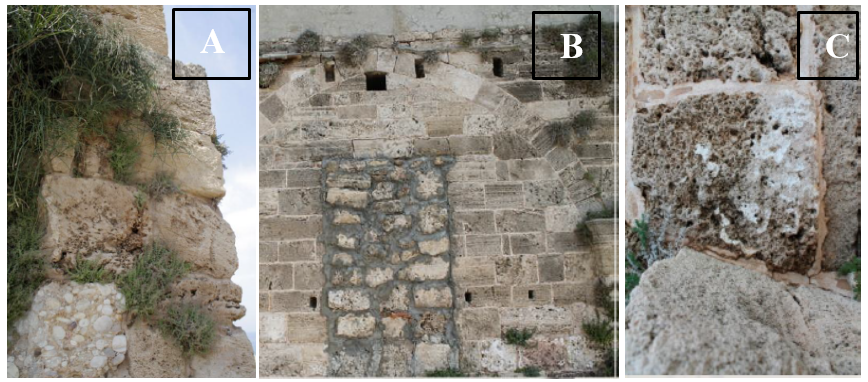
Figure 2: Images taken at site in Tyre City showing Structural and Physical Changes (Problems). (A): Spread of Plants; (B): Appearance of Cements sheets on main elevations; (C): Masonry and Stone Problems (appearance of Black colors, Bacteria, holes…) (Source: Author)
The problems and reasons for plants growing on the walls are due to frequent exposure to weather factors (such as salt-laden winds and temperature differences near the sea) and the loss of mortar between the joints, which allows water to penetrate and create a suitable space for plant growth. As a result, maintenance involves uprooting and using chemical methods to eliminate these plants (Table 1).
Table 1. Maintenance or Repair Methods for the Growing Plants Problems
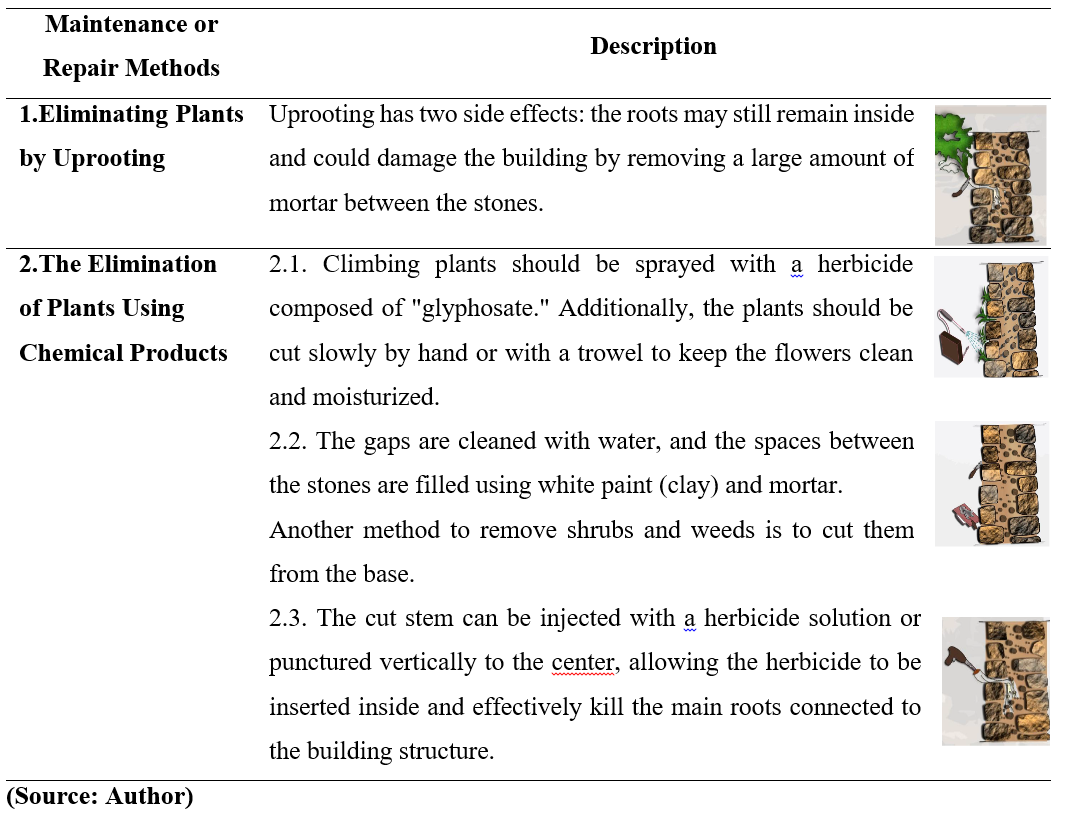
Exterior stone is a material subjected to the influence of various types of air pollution and undergoes several changes associated with hydration, leading to the deterioration of the elevation. Therefore, a proper diagnosis should be conducted to investigate the problem and identify the suitable cleaning methods, as mentioned in Table 2.
Table 2. Maintenance or Repair Methods for Exterior Stone Problems

Like other materials, stone is also exposed to various factors that can cause damage, such as the separation of its constituent layers. Therefore, it is essential to polish and repair the main surface of the stone. The benefits of using this method lie in preserving the largest quantity of the stone’s main substance. The repair process involves the following steps:
1. Outline the surface that requires repair and prepare the lime mortar.
2. Spray the surface with water, then apply a second layer of clay until it exceeds the surface of the gap. Allow it to dry.
3. Cover the finished surface with a damp piece of cotton and leave it to dry slowly.
4. Trim flat surfaces with a saw blade according to their final shape. Then, carve out the marked surface with a chisel and hammer to obtain a uniform recess of 15 cm in depth.
5. Hydrate the surface with water and use trowels to extend the plaster, filling half of the gap. Leave the plaster to dry for two or three days.
By following these steps, the main surface of the stone can be effectively repaired, preserving its original substance and enhancing its durability.

Figure 3. Diagrams Illustrating the Techniques for Preserving the Stone.
(Source: Author)
4.2. Intervention Cases in Tyre City
The mentioned techniques were employed in numerous historic buildings observed in the city of Tyre after thorough site visits and individual case investigations. These methods were applied based on the specific type of intervention required for each building or area, such as restoration, preservation, or rehabilitation. The application of these techniques was supported by various reports from reputable sources, including UNESCO, the municipality, relevant organizations, and specialists (Ali Badawi, a PhD in archaeology and the scientific director of archaeological excavations in Tyre and South Lebanon). The utilization of these well-documented and expert-approved methods ensures the appropriate conservation and restoration of Tyre’s valuable cultural heritage.
The first case study focuses on the restoration of the Archaeological Site in Tyre City, which holds the distinction of being one of the UNESCO World Heritage sites in Lebanon. Over time, the site has faced destruction and neglect during various periods of war, as well as exposure to local climatic conditions and biological growth occurring in the distinct four seasons.
To address the restoration needs, sustainable techniques were employed, including the use of natural stones like sandstone to replace missing or damaged parts of the structure. Additionally, an eco-friendly mortar made from lime and volcanic ash was utilized, reducing the carbon footprint of the restoration process. Advanced technology such as GIS scanning was employed to create 3D models of the site (Baratin & et. al., 2014), along with other methods like 3D X-ray micro-computed tomography (3D-μCT), Fourier transform infrared spectroscopy (FTIR), micro-X-ray fluoroscopy (μ-XRF), X-ray powder diffraction (XRD), and radiocarbon dating (C14) (Badde, et. al., 2020).
An illustrative example of the intervention conducted in 2014-2015 focused on a 69 sq.m area of the mosaic, within the framework of the Ba‘albek and Tyre Archaeological Project (BTAP I), as shown in figure 4 images № 1. The intervention served as an opportunity to train local building technicians and youth in the principles and techniques of mosaic conservation-restoration. It commenced with condition reporting, topographic survey, photo documentation, and digital mapping, followed by foil mapping of gridlines and lacunae, mapping of past repairs, and mortar sampling. The restoration process involved lifting the mosaic in sections, along with the top half of the cement substrates, and then removing the cement to clean the tesserae. The mosaic was then relocated in situ on a new hydraulic lime mortar substrate (Badde & MacKinnon, 2016).
By combining sustainable methods and advanced technology, the restoration of the Archaeological Site in Tyre City aimed to preserve its historical significance and cultural heritage for future generations.
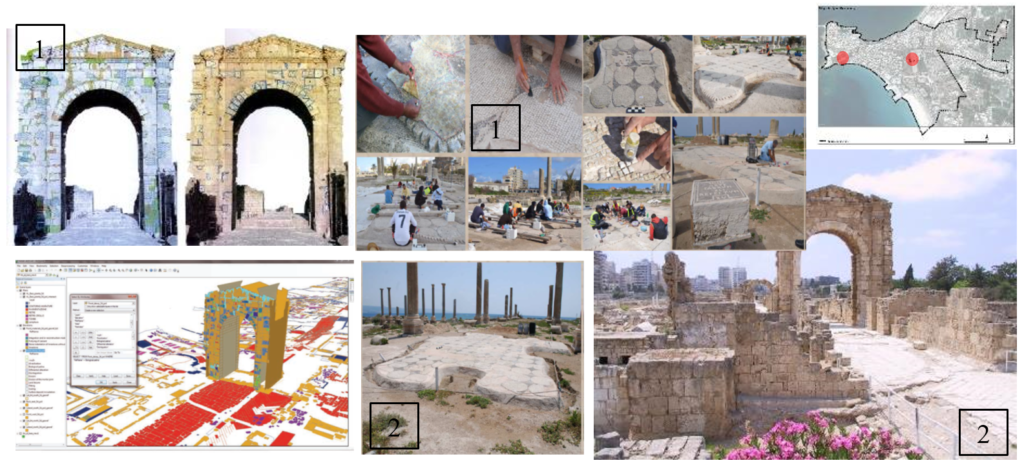
Figure 4. Before (as shown in images №1) and After (as shown in images №2) Restoration of the Archaeological Site in Tyre City on site work (Source: Edited by Author based on Badde & MacKinnon, 2016)
Historic Buildings (commercial, residential, religious, and cultural): The interventions in various historic buildings, including commercial, residential, religious, and cultural structures, often involved a combination of technical and structural methods. Traditional building techniques and locally-sourced materials, such as sandstone, were utilized to ensure the preservation of the buildings’ original appearance.
Local artisans (as shown in Figure 5, Image №1*) played a significant role in the intervention process. Their expertise and craftsmanship were employed in the restoration of the Al Mamluk Palace, renovation of the Maronite Church, restoration of the Sunna Mosque and Sharaf Eddine Mosque, and the conservation of AL Bitar House, among other projects. The involvement of these skilled artisans contributed to the authenticity and cultural continuity of the restoration efforts.
By employing local techniques and materials, and engaging the expertise of local artisans, the interventions aimed to safeguard the historical and cultural value of these buildings, preserving their significance for generations to come.

Figure 5. Historic Buildings in the Old City before (as shown in images №1/№1*) and after (as shown in images №2) Intervention.
(Source: Based on khoury study 2002; photos taken by the Author 2022-2023)
Mamlouk Palace: The Mamlouk Palace, constructed in the 13th century and located adjacent to the main archaeological site of the old city of Tyre, underwent extensive restoration. The restoration process involved repairing the damaged walls and roofs, reinforcing the foundations, and carefully preserving the original decorative elements (as seen in Figure 6, Images №1). Simultaneously, modern amenities were integrated into the building while ensuring the preservation of its historical and cultural significance.
One of the major challenges faced by the engineers during the restoration was replacing the damaged wooden beams and columns without compromising the integrity of the original stonework. To address this, they conducted a meticulous approach by cautiously removing the damaged elements and substituting them with new, durable, and sustainable materials. In this regard, the decision was made to remove the entire roof of the second floor and replace it with a roof composed of trusses, eliminating the use of wood (Concrete casting for the new slab). Additionally, the foundations of the building, which had weakened over years of neglect, required extensive reinforcement to ensure the structure’s stability and longevity.
Through these carefully planned restoration efforts, the Mamlouk Palace was revitalized, safeguarding its historical and architectural heritage for future generations to appreciate and cherish.
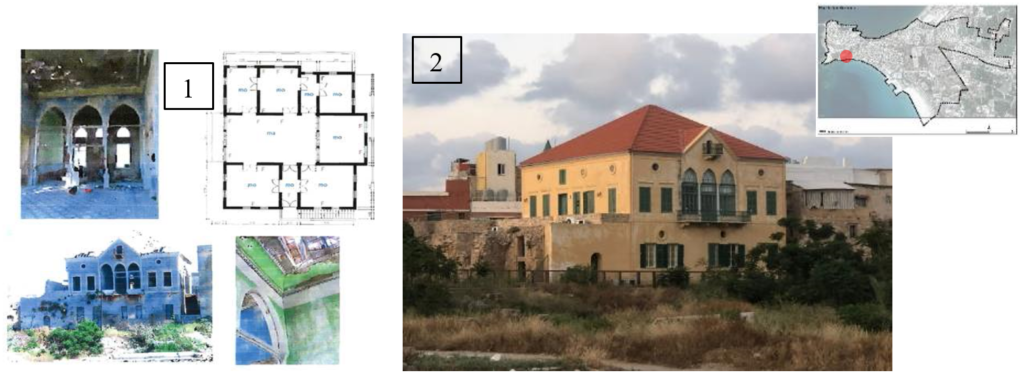
Figure 6. Mamluk Palace Before (as shown in images №1) and After (as shown in images №2) Intervention.
(Source: Based on khoury study 2002, photo taken by the Author 2023)
CHUD Project (The Community Housing and Urban Development): The CHUD project was implemented in different stages and periods, funded through a loan agreement involving the World Bank, the Lebanese Government, the French Development Agency (AFD), and the Italian Cooperation, with support from local authorities (CHUD-PMU & ELARD, 2011). The primary objective of the project was to revitalize the old city by restoring its historic buildings, enhancing its infrastructure, and promoting tourism.
Restoration work was executed in a technical and structural manner, employing traditional techniques and materials to maintain the authentic appearance of the buildings (as depicted in Figure 7, Images №1). To ensure the safety of inhabitants, the restoration team also utilized modern techniques to reinforce the structures. For example, some buildings had their foundations and walls reinforced with steel and concrete to enhance earthquake resistance.
Incorporating innovative technologies, the CHUD project employed Building Information Modeling (BIM) and Geographic Information System (GIS). BIM facilitated the creation of accurate 3D models of the buildings, allowing the restoration team to identify any structural or design flaws before commencing restoration work. On the other hand, GIS was utilized to map the buildings and determine the most suitable sites for the project, considering factors such as accessibility and existing infrastructure (as shown in Figure 7, Images №1*).
Specifically, the project encompassed the restoration of buildings along the Cultural path, Souk Al Sayaghin (old Souk), and Al Bawaba, with collaboration from the General Directorate of Antiquities team. Through these concerted efforts, the CHUD project aimed to rejuvenate the old city, preserving its cultural heritage, and contributing to the community’s sustainable development.
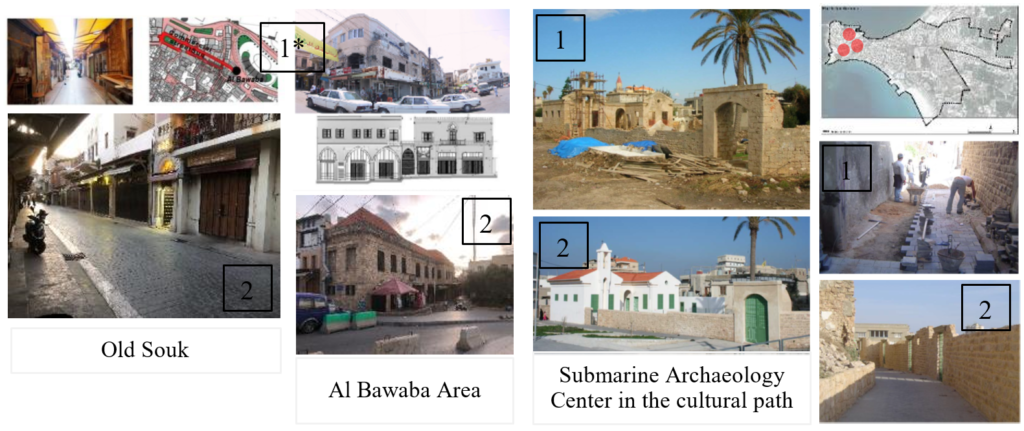
Figure 7. Cultural path, Old Souk and Al Bawaba before (as shown in images №1/№1*) and after (as shown in images №2) Intervention.
(Source: Based on khoury study 2002, photos taken by the Author 2022-2023)
While restoration projects for historic buildings in Tyre city have seen many successes, there have also been instances of failure due to various factors. Poor test techniques, inadequate implementation, and lack of funding are some of the main reasons for restoration failures.
One critical factor contributing to restoration failures is the lack of some test techniques, such as Load testing, Seismic evaluation, and Material testing. In some cases, buildings were not thoroughly tested, leading to incorrect intervention planning and oversights related to the original construction methods and materials. While visual inspections and non-destructive testing methods like ultrasonic testing and x-ray radiography were used in Tyre city, the implementation of more comprehensive techniques like GIS may have been overlooked, contributing to issues in the restoration process.
Inadequate implementation is another key reason for restoration failures, often stemming from a lack of proper training, expertise, or experience among the restoration teams. Although the CHUD project received funding from the European Union and local authorities, financial constraints still hindered the project’s success. Insufficient funds allocated to major structural repairs caused delays in restoration work, while ineffective communication with the local community led to misunderstandings and disagreements.
Moreover, some of the techniques used in the CHUD project may not have been appropriate for the specific buildings or conditions in Tyre city. The use of eco-friendly materials that were unsuitable for the local climate and conditions resulted in decay and damage over time.
To ensure the success of future restoration projects, it is essential to address these issues by carefully planning, funding, and executing restoration initiatives with the appropriate expertise, techniques, and resources. Thorough testing, adequate training, community engagement, and the selection of suitable materials and methods are crucial to achieving successful restoration outcomes in preserving the cultural heritage of Tyre city.
The analysis of heritage building interventions in Tyre City reveals that a significant number of buildings underwent restoration processes, with 50% of them reusing materials. These interventions can be categorized into physical preservation procedures, aimed at improving the structural and architectural quality of the buildings, and adaptive reuse procedures, which enhance both the interior and exterior to accommodate modern use. However, it is observed that most of the buildings have not undergone any interventions to improve energy efficiency and energy-saving retrofits.
To ensure successful restoration projects, it is essential to consider sustainability and its elements in every phase of the process. Social, economic, and environmental aspects of sustainable restoration are interconnected, and the responsible professionals should be aware of these important concepts. Environmental actions and their impact on the structure and integration with nature are crucial indicators of a sustainable project. Moreover, social aspects must prioritize the satisfaction of inhabitants, address structural problems, and ensure the conservation of cultural heritage.
Choosing traditional techniques and materials is essential to respect the historical value and achieve the integrity and authenticity of historic monuments. Whenever possible, the replacement of deteriorated material with the same composition is preferred, and techniques used for vernacular architecture should satisfy safety requirements, making them the most sustainable solution for historic structures.
In the following article, the focus will be on differentiating between intervention actions, outlining the main steps of restoration for historic buildings, and exploring the possibility of improving the sustainability of concrete through the addition of waste plastic fibers. The article aims to promote the conservation of heritage and historic buildings while reducing the environmental impact of construction through sustainable techniques. By incorporating sustainable practices into restoration projects, Tyre City can preserve its cultural heritage and contribute to a more sustainable future.
Cite: Awad, Z. (2023). Sustainable Restoration Techniques for Historic Buildings in Tyre City. Steps For Civil, Constructions and Environmental Engineering, 1(1), 10–17. https://doi.org/10.61706/sccee120113
Copyright: © 2023 by the authors. Licensee SSG, Dubai, UAE.
This article is an open access article distributed under the terms and conditions of the Creative Commons Attribution (CC BY-NC-ND 4.0) license (http://creativecommons.org/licenses/by-nc-nd/4.0/).






An independent academic publisher with an editorial team including many of the top researchers in the world. SSG publishes research, review, and case report articles in double-blind, peer-reviewed, open access scientific and academic journals.
Copyright © 2023 Scientific Steps International Publishing Services LLC (Dubai – United Arab Emirates)